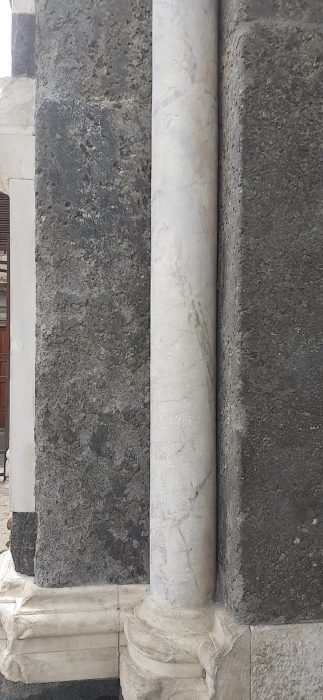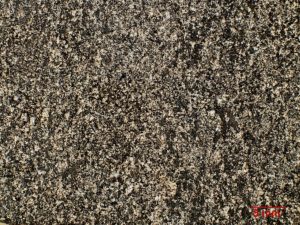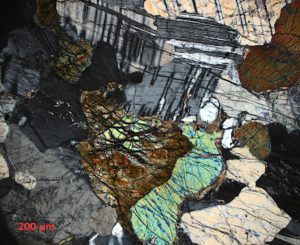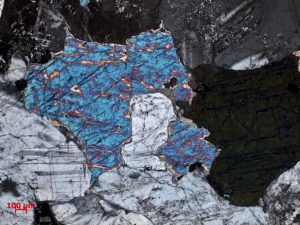
LITHOTYPE
Gabbro
COMMON NAMES
Granitone, Eufotide di Monte Ferrato
ROCK CLASSIFICATION
Igneous rock
Ophiolit Complex of Monte Ferrato area (Prato, Northern Tuscany).
This intrusive igneous rock forms when molten magma slowly cools, beneath the Earth’s surface, into a holocrystalline mass; it is the plutonic equivalent of basalt (effusive rock). Due to its variant nature, the term “gabbro” is applied to a wide range of intrusive rocks, many of which are merely “gabbroic”. Much of the Earth’s oceanic crust is made of gabbros; they are very common in the rift areas. The gabbro used in the Florence architecture has been historically referred to the Tuscany Ophiolitic Complex (Northern Apennine) originated during the Jurassic period.
The term “gabbro” comes from a small italian village located close to Livorno (Tuscany). The name was used for the first time in 1768 by the italian geologist Giovanni Targioni Tozzetti to indicate a type of rock observed in the ophiolites of the Apennine Mountains in Italy. Then, in 1809, the german geologist Christian Leopold von Buch redefined the term using it more restrictively.
Gabbros are greatly valued in the construction industries because of their high strength, toughness, dark color and excellent polishing capabilities. In Tuscany, the Monte Ferrato gabbro was mainly used to make mill grindstone; in the florentine architecture we can observe it in the jambs of the lateral portals of Basilica di Santa Maria Novella.
The rock mostly consists of ferromagnesian minerals such as clinopyroxene (mainly augite) and feldspar (Ca-rich plagioclase); opaque minerals are present in small amounts. Gabbro with olivine is called Olivine Gabbro. The type of gabbro containing predominantly ortho-pyroxene (hypersthene) and Ca–plagioclase is known as Norite.
Macroscopic description
Gabbro appears as a densely, tough, homogeneous rock showing fairly the same texture and composition throughout the rock mass; it is coarse-grained and usually dark-coloured rock (dark grey to greenish black to black) because of the high proportion of ferromagnesian minerals.
Microscopic description
This rock is usually equigranular in texture, and generally coarse grained, with crystals, deeply related to each other, in the size range of 1 mm or greater.


